Proud and Out: Early LGBTQ Activism on Campus
Introduction
Text-to-speech Audio
Images
"No outcry over gay support"
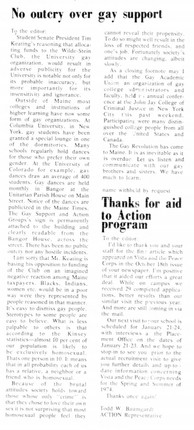
Homosexual Dance Slated at University
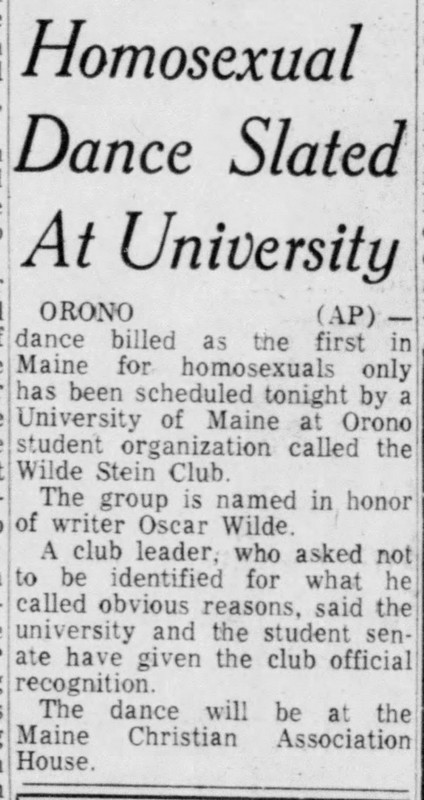
"Bubar denounces homosexuals at UMO"
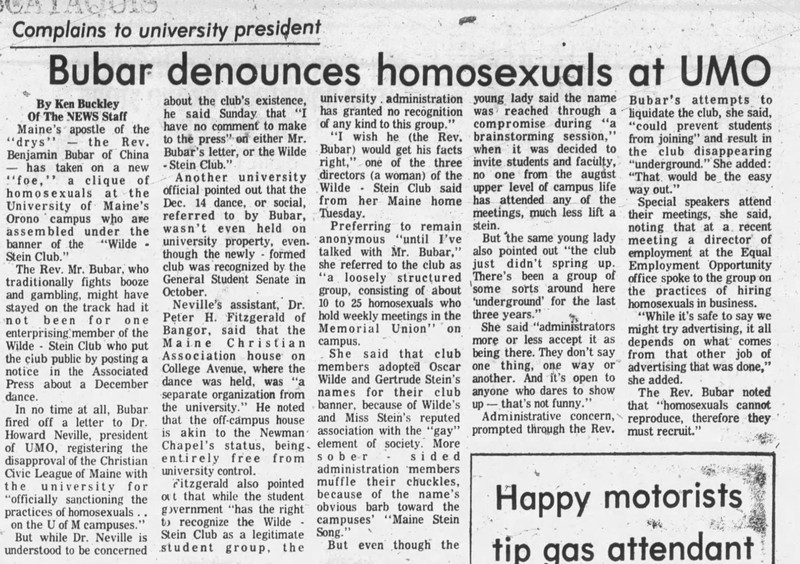
"Homosexual spokesperson cites Wilde-Stein organization
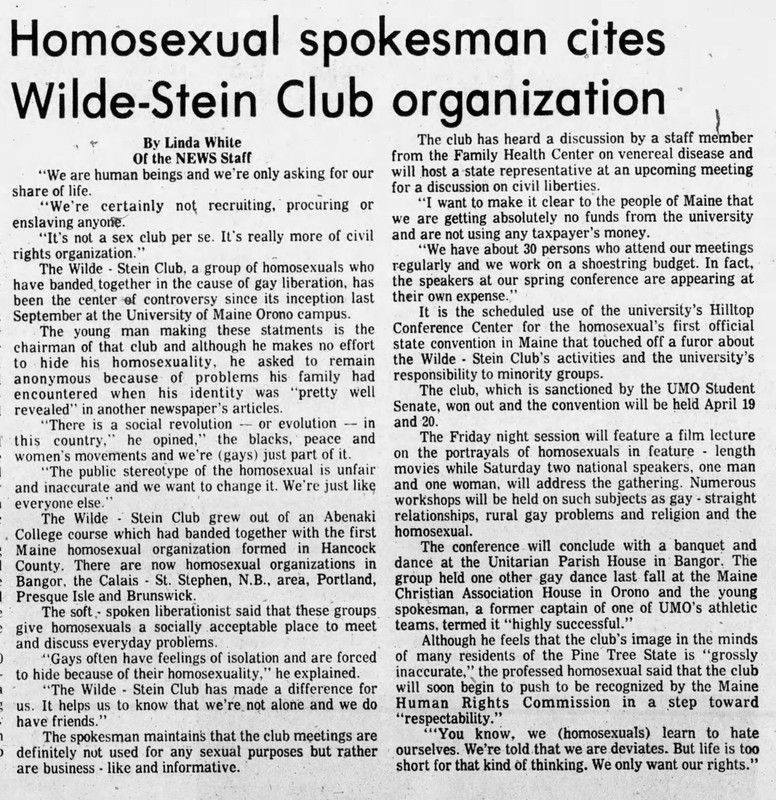
Article about threatened budget cuts

Wilde Stein original member Sturgis Haskins

Undated Wilde Stein photo circa 1975-1979
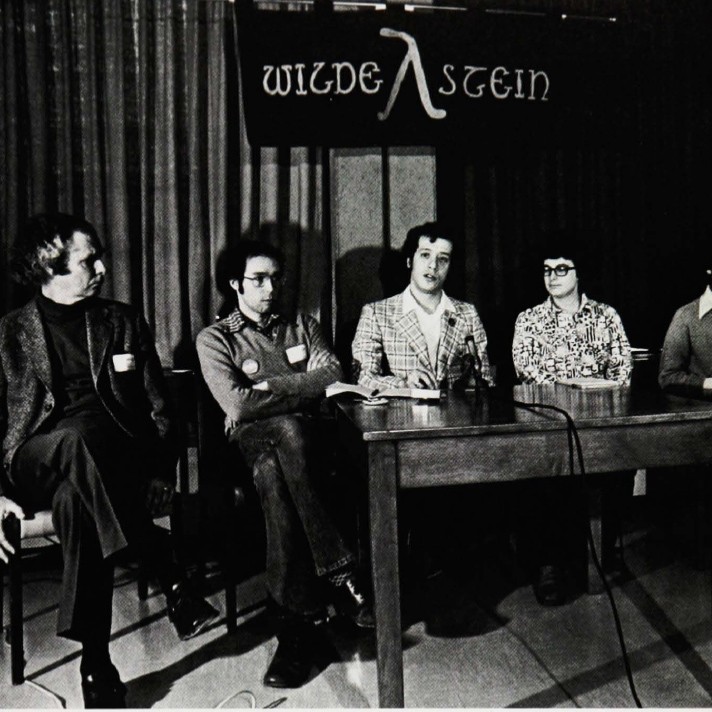
Pride flag being raised for Pride Week in 2013
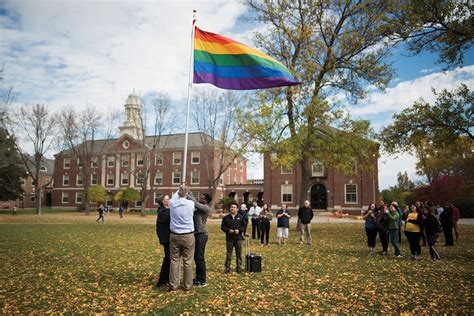
Backstory and Context
Text-to-speech Audio
In October of 1973, the Wilde-Stein Club was given a provisional status as a student organization. The first openly gay club at the University of Maine, it was founded by alumni Sturgis Haskins, Steven Bull, and John Frank. The group successfully provided LBGTQ+ students with a safe place to be open about their identity and find support among peers. The group also provided assistance to non-students across the state of Maine, creating the Annual Maine Gay Symposium in April of 1974. Following pushback, in an effort to protect the anonymity of group members and attendees, the symposium had a requirement that no media outlet covering the events use photographs or names of anyone other than the featured speakers.
The concern at the time was understandable. For perspective, the Stonewall Riots, often seen as the impetus of the gay civil rights movement, had occured only five years earlier in 1969. New York Police brutally beat patrons at the Stonewall Inn, a popular gay bar, sparking spontaneaous marches elsewhere in support of the gay community. Federal protections against discrimination did not yet exist, and many people stayed closeted in public life for fear of arrest, losing their jobs, or violent attacks.
Protestors angry at the university for allowing such.a group to be formed took to their politicians, who threatened cuts to the university's budget. News over the conflict hit national headlines. Activist Dr. Howard J. Brown of the National Gay Task Force drew comparisons to the larger civi rights movement saying, "If we must come to Maine as we went to Mississippi, then we'll keep coming to Maine.
The year 2022 will mark the 38th annual Coming Out Week at UMaine.
You can explore the archival papers of Wilde Stein, and other student organizations, in Fogler Library’s Special Collections on level 3.
Sources
See sources for individual articles linked below.
Maine Campus, May 29, 1973
Biddeford Saco Journal, December 14, 1973.
Bangor Daily News, January 2, 1974
Bangor Daily News, February 24, 1974
Bangor Daily News, March 10, 1974
Ellsworth American
University of Maine Photo Archives
Maine Campus
